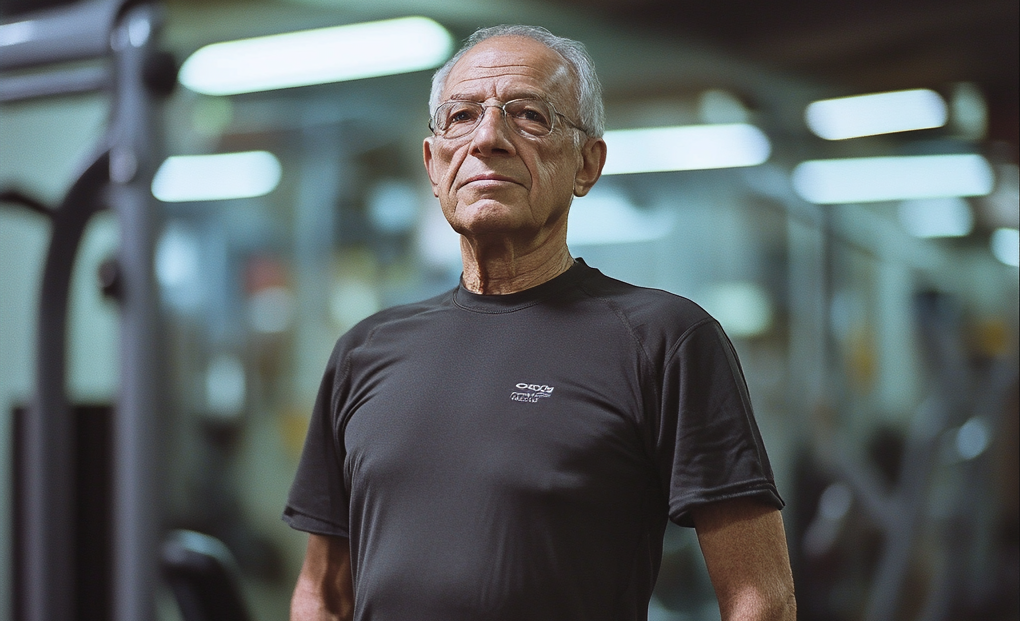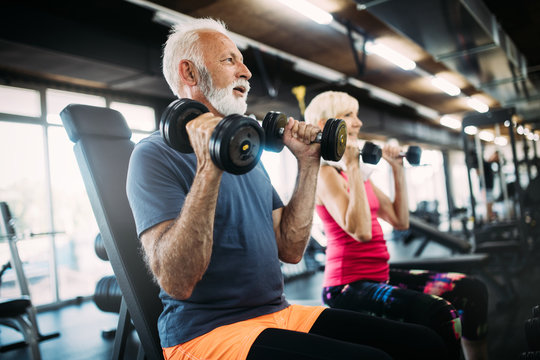Let’s Get Strong and Bust Some Myths
Tackling Strength Training Myths
Alright, let’s set the record straight on this whole strength training thing. Plenty of misconceptions float around, making it harder than it should be to understand what is real, and if you really should be in the gym.
If busting myths gave you muscles, we’d have a six-pack by now. Clearing them up makes the workout journey a whole lot smoother and way more rewarding for anyone serious about gaining some real strength.
Importance of Knowing What’s Real
In the millions of fitness tips flooding the internet, figuring out what’s true is like spotting Waldo in a sea of stripes. Once you sort the facts from the fibs, your workout choices, what you eat, and even how you push yourself in the gym get way smarter.
Recognizing the reality lets you throw away the nonsense, so you can really start to make progress and hit those personal bests with confidence.
Myth #1: Strength Training Makes You Bulky

Let me kick things off by busting the myth that pumping iron will give you Hulk-sized muscles overnight. Some folks shy away from weights, fearing they’ll wake up and not fit through the door. The truth is quite the opposite.
The Truth Behind Muscle Growth
Here’s the lowdown: lifting doesn’t mean you’ll become Arnold Schwarzenegger. Growing solid muscles is a science experiment with variables like genetics, what you eat, and how you train.
When you hit the gym, those weights cause tiny little tears in your muscles. It sounds bad, but it’s the body’s way of building back stronger. This process, mentioned fancy-like as hypertrophy, makes you fit and firm, not beefy.
If aiming to look like a pro wrestler, you’d need to follow a hardcore routine with specific meals and loads of iron. But for most of us, the usual weights session will leave us sleek and sculpted, not elephantine.
In fact, progressive resistance training has shown to increase muscle strength without excessive increases in muscle size, especially in women due to lower testosterone levels (Wernbom et al., 2007).
More clinical trials show that regular strength training improves muscle tone and functionality without the excessive bulk seen in elite bodybuilders, who train with different goals and modalities (Schoenfeld & Contreras, 2014),
So for the most part, you will gain strength before getting big and bulky muscles.
Benefits of Lean Muscle Mass
Weights bring a whole bag of perks to the table. First and simple, muscles burn calories like a furnace—goodbye extra fat! They make you part of the “fit and fab” squad by improving posture and powering up your everyday life.
Let’s talk metabolism—muscles keep it fired up even when you’re lounging. Excess Post-exercise Oxygen Consumption, or EPOC, is what happens after you lift weights (or exercise in another form). So you naturally will burn more calories throughout the day if you are lifting weights, which will help you avoid bulking up.

It’s crucial to separate the mountains of muscle from fit, lean mass. Your results truly depend on what you want and make you feel the best. So, chuck the notion that weights bully you into bigness. Craft your fit strategy, and you’ll see that strong isn’t always huge.
Adaptations to strength training are highly individual, with genetics playing a significant role in muscle growth potential; not everyone will get bulky from lifting weights. In fact, most people don’t need to worry about gaining size rapidly from lifting weights, unless they are training hard every day and dieting to gain size (Bamman et al., 2007).
Myth #2: Cardio Is Better for Fat Loss Than Strength Training

Alright, let’s tackle another popular myth head-on. You know, the idea that if you’re not running like a hamster on a wheel, you’re not losing fat. I used to buy into this false rumor, but once I learned strength training’s secret powers, I changed my routine.
Giving Strength Training the Credit It Deserves
Tossing iron around in the gym isn’t just for Hulk wannabes. It’s like a secret weapon in the fat loss arsenal. Sure, cardio torches calories as you move, but strength training brings the quiet heat long after you’ve powered through those squats.
When you’re lifting weights, you’re also crafting some lean, mean muscle. And that muscle? It’s a calorie-burning machine throughout the day, thanks to the EPOC effect we just covered. Even when you are sleeping, you will burn more calories, thanks to strength training!
Long-term strength training has also been associated with reduced visceral fat and can help improve body composition even without significant changes in body weight (Pratley et al., 1994).
Strength training isn’t just a calorie burner – it reshapes your body to burn more overall. Think about it as giving your metabolism a nice little boost. This combo of building and burning makes for results that go the distance.
The Best Combo for Fat Loss: Cardio Meets Strength

Alright, spoiler alert: pitting cardio against strength training is like comparing apples and oranges when the best option is both. Yeah, cardio gets your heart pumping and those calories sweating, while making sure you can actually run after your runaway dog without feeling like your chest will explode.
Strength training, though, is sculpting behind the scenes. Do a mix of runs, bike rides or some pool laps, and you’re keeping that heart in check. Throw some weights into the mix, and you’re building a body that can actually carry those groceries without needing a forklift. Together, this dynamic duo cranks up your fitness progress like nobody’s business.
Strength training combined with aerobic exercise is more effective for fat loss than aerobic exercise alone, as it helps maintain lean muscle mass during weight loss (Willis et al., 2012).
Another study has shown that resistance training can enhance resting metabolic rate (RMR) more significantly than cardio alone, leading to greater long-term fat loss and energy expenditure (Westcott, 2012).
So, swing those kettlebells some days, hit the trails on the others, or mash it up with workouts that blend the best of both worlds – you get the idea.
By bidding adieu to the bias in favor of cardio, you’ll unlock a more exciting, results-driven fitness routine. Remember, mixing things up keeps your routine fresh and your body guessing.
Myth #3: Lifting Heavy Weights Is Dangerous

Everybody seems to fear heavy weights like they’re some kind of beast ready to pounce. But here’s the truth—the safety, when lifting heavy, mostly boils down to how you’re doing it. Think of it like driving a car. The car itself isn’t inherently dangerous—it’s all about who’s behind the wheel. With the right techniques, lifting heavier weights can be your best buddy in getting stronger and building muscle.
Understanding the Importance of Proper Form
Let’s talk about form for a sec, because it makes all the difference. When lifting weights that make you grunt a bit (or a lot), doing it the right way is how you avoid injuries. This isn’t just about sticking your chest out or puffing your muscles, it’s about knowing how to brace your core, keep your back straight as a ruler, and smoothly go through the full motion.
One study done on young strength training participants showed that across all their studies, just three injuries were recorded, and injury rates were very low (ranging from 0.053 to 0.176 per 100 participant-hours) (Malina, 2006). This study showed that a focus on proper technique rather than lifting heavy, combined with dynamic warm-ups, leads to very little injury risk.
If you’re unsure whether you’ve nailed the form, grab a session with a fitness coach who knows their stuff. They will see things you might not and can tell you if you’re veering off course. Plus, sometimes watching yourself in a video can help you spot and fix those sneaky mistakes.
A 2010 study showed that resistance training for young athletes, when properly supervised and following age-appropriate guidelines, exhibits a relatively low risk of injury. It also showed that for athletes, lifting weights can atually prevent and reduce the risk of injuries (Faigenbaum & Myer, 2010)! So, actually quite the opposite of the myth you hear.
Benefits of Progressive Overload

Meet your new BFF—Progressive Overload. No, it’s not the name of a wrestling move, though that would be cool. Instead, it’s a smart way of saying, “Let’s up the ante, little by little.” By slowly stacking more weight or squeezing out another rep here and there, your muscles get the memo: “Grow, baby, grow!”
When you flirt with heavier weights over time and bump up the challenge, muscles adapt, like trying to fit into a favorite pair of jeans after the holidays. But don’t go all gung-ho at once. It’s about a little today, a little more tomorrow—it keeps things fresh and keeps your muscles guessing. Plus, mixing up your workouts stops you from getting bored while helping fend off those pesky overuse injuries.
Many studies have shown that progressive overload is the best technique to increase strength, muscular endurance, and muscle size, all while avoiding injuries (Plotkin et al., 2022). This technique is extremely versatile, and you have to include it into your program.
The trick is walking the fine line between challenging yourself and knowing your limits. You don’t need to chase that Hulk-like weight—just go enough to keep muscles guessing, keeping that form perfect. Building strength isn’t about maxing out every time, but finding that sweet spot where you’re pushing yourself while keeping each lift smooth and smart.
Myth #4: You Need Special Supplements for Muscle Growth

Getting through the maze of muscle-building advice is tricky—everyone and their grandma has an opinion. One big myth floating around? That you need fancy supplements to pack on muscle. Let’s break that down, shall we? Turns out, good ol’ food has your back when beefing up those biceps.
The Role of Nutrition in Muscle Building
Nutrition is absolutely essential but often underrated. For strength fanatics like us, what we eat can make a huge difference. Protein? It’s the star of the show. It helps rebuild your muscle fibers each time you hit the weights. Think tasty stuff like chicken, fish, or even wholesome plant proteins. Pair those with some eggs or a hearty dairy fix, and you’re on the right path.
Adequate protein intake, is sufficient for muscle repair and growth without the need for special supplements in most individuals engaging in strength training (Stokes et al., 2018). Aim for 0.8g-1.0g of protein per lb of bodyweight per day to maximize your gains.
Don’t forget carbs, the best friend to your pre- and post-workout grind. They’re what will give you energy to take on the day, especially the whole grains, fruits, and veggie kinds. Carbs load your tank so you’re ready to smash that training session and keep going.
Importance of a Balanced Diet

Sure, supplements can play a part when diets fall short, but they’re not your main act. The spotlight should still be on a diet full of diverse, nutritious eats. You need that full spread—proteins, fats, carbs, vitamins, minerals—to really shine in the gym.
Remember, muscles grow with good food, not magic pills. Studies have shown that supplements like Creatine, while beneficial, are not essential for muscle growth; as dietary sources and regular resistance training are sufficient to support muscle hypertrophy (Kreider et al., 2017).
Another study has shown that adequate hydration and balanced macronutrient intake is shown to be as effective as many commercial supplements for supporting exercise recovery and muscle growth (Aragon & Schoenfeld, 2013).
So, let this be your takeaway: If you stick to the right foods, you can put that supplement myth to bed. Feed your body well, aim for variety, and you might just find that your natural gains surprise you. Fuel up with the good stuff, and watch your hard-worked muscle efforts pay off in the long run! Read our guide on strength training nutrition for more details!
Myth #5: Strength Training Is Only for Young People

Let me tell ya, I’ve learned over time that thinking strength training is just for the youngins is a bunch of baloney. Actually, it’s like a magic sauce for the slightly older folks too, offering more perks than a coffee shop punch card.
Why Pumping Iron Matters When You’re Older
When you’re stacking candles on your birthday cake, lifting weights isn’t just for looking good at the class reunion. It’s about keeping that muscle mass from packing its bags as we age, and giving our bones and joints some well-deserved TLC. Plus, strength training can turn back the clock on your balance, coordination, and cognitive function.
Strength training in individuals over 60 can significantly enhance muscle strength by improving muscle mass and motor unit recruitment and increasing their firing rate. This helps counteract age-related declines in muscle function and maintains mobility (Mayer et al., 2011).
As individuals age, they experience a natural decline in muscle mass and strength, a condition known as sarcopenia. This decline typically begins around age 30-35 and accelerates after 65 for women and 70 for men. Sarcopenia contributes to reduced mobility, increased risk of falls, chronic diseases, and decreased independence (National Institute on Aging, 2022).
Terrible, really. The good news, strength training has shown to be effective for reducing sarcopenia, and retaining motor function. This shows the role of strength training in enhancing quality of life in older adults (Mayer et al., 2011).
And let’s just talk real-life stuff: being strong makes grocery shopping and yard work a heck of a lot easier. Who’s got time for struggling with heavy bags? Not me! On top of that, strength training can boost psychological well-being, self-esteem, and cognitive function. Overall, your quality of life as you get older will improve if you hit the gym a little bit, it is very much worth it!
Making the Workout Work for You

Here’s the thing, though—not every strength routine fits like a glove for everyone. Older adults might find it handy to throw in some energetic warm-ups and limbering moves. Also, making sure form is on point is key to dodging injuries. As the saying goes, ain’t nobody got time for that!
Recovery time isn’t just a suggestion—it’s crucial. Giving your body the rest it deserves can keep you lifting happy and healthy. Whether you’re picking it up as a newbie or continuing your love affair with the weight bench, it’s all about tweaking your routine to slide right into your lifestyle, bringing both body and mind into high gear.
Breaking the mold that weights are for the young folks opens up a whole new world of fitness for everyone. Embracing strength training at any age is like picking up a magic ticket to a life filled with energy, strength, and all-around good vibes. So, let’s smash that myth and lift our way to a better, brighter future, stretching those muscles and stereotypes at the same time.
References
- Wernbom, M., Augustsson, J., & Thomeé, R. (2007). The influence of frequency, intensity, volume and mode of strength training on whole muscle cross-sectional area in humans. Sports Medicine, 37(3), 225-264. DOI: 10.2165/00007256-200737030-00004
- Schoenfeld, B. J., & Contreras, B. (2014). The muscle pump: potential mechanisms and applications for enhancing hypertrophic adaptations. Strength and Conditioning Journal, 36(3), 21-25. DOI: 10.1519/SSC.0000000000000044
- Bamman, M. M., Petrella, J. K., Kim, J. S., Mayhew, D. L., & Cross, J. M. (2007). Cluster analysis tests the importance of myogenic gene expression during myofiber hypertrophy in humans. Journal of Applied Physiology, 102(6), 2232-2239. DOI: 10.1152/japplphysiol.00024.2007
- Willis, L. H., Slentz, C. A., Bateman, L. A., Shields, A. T., Piner, L. W., Bales, C. W., Houmard, J. A., & Kraus, W. E. (2012). Effects of aerobic and/or resistance training on body mass and fat mass in overweight or obese adults. Journal of Applied Physiology, 113(12), 1831-1837. DOI: 10.1152/japplphysiol.01370.2011
- Westcott, W. L. (2012). Resistance training is medicine: Effects of strength training on health. Current Sports Medicine Reports, 11(4), 209-216. DOI: 10.1249/JSR.0b013e31825dabb8
- Pratley, R., Nicklas, B., Rubin, M., Miller, J., Smith, A., Smith, M., Hurley, B., & Goldberg, A. (1994). Strength training increases resting metabolic rate and norepinephrine levels in healthy 50- to 65-yr-old men. Journal of Applied Physiology, 76(1), 133-137. DOI: 10.1152/jappl.1994.76.1.133
- Stokes, T., Hector, A. J., Morton, R. W., McGlory, C., & Phillips, S. M. (2018). Recent Perspectives Regarding the Role of Dietary Protein for the Promotion of Muscle Hypertrophy with Resistance Exercise Training. Nutrients, 10(2), 180. DOI: 10.3390/nu10020180
- Kreider, R. B., Kalman, D. S., Antonio, J., Ziegenfuss, T. N., Wildman, R., Collins, R., Candow, D. G., Kleiner, S. M., Almada, A. L., & Lopez, H. L. (2017). International Society of Sports Nutrition position stand: safety and efficacy of creatine supplementation in exercise, sport, and medicine. Journal of the International Society of Sports Nutrition, 14(1), 18. DOI: 10.1186/s12970-017-0173-z
- Aragon, A. A., & Schoenfeld, B. J. (2013). Nutrient timing revisited: is there a post-exercise anabolic window?. Journal of the International Society of Sports Nutrition, 10(1), 5. DOI: 10.1186/1550-2783-10-5
- Mayer F, Scharhag-Rosenberger F, Carlsohn A, Cassel M, Müller S, Scharhag J. The intensity and effects of strength training in the elderly. Dtsch Arztebl Int. 2011 May;108(21):359-64. doi: 10.3238/arztebl.2011.0359. Epub 2011 May 27. PMID: 21691559; PMCID: PMC3117172.
- “How Can Strength Training Build Healthier Bodies as We Age?” published on June 30, 2022: https://www.nia.nih.gov/news/how-can-strength-training-build-healthier-bodies-we-age
- Pierce KC, Hornsby WG, Stone MH. Weightlifting for Children and Adolescents: A Narrative Review. Sports Health. 2022 Jan-Feb;14(1):45-56. doi: 10.1177/19417381211056094. Epub 2021 Nov 15. PMID: 34781771; PMCID: PMC8669931.
- Malina RM. Weight training in youth-growth, maturation, and safety: an evidence-based review. Clin J Sport Med. 2006 Nov;16(6):478-87. doi: 10.1097/01.jsm.0000248843.31874.be. PMID: 17119361.
- Faigenbaum AD, Myer GD. Resistance training among young athletes: safety, efficacy and injury prevention effects. Br J Sports Med. 2010 Jan;44(1):56-63. doi: 10.1136/bjsm.2009.068098. Epub 2009 Nov 27. PMID: 19945973; PMCID: PMC3483033.
- Benito PJ, Cupeiro R, Ramos-Campo DJ, Alcaraz PE, Rubio-Arias JÁ. A Systematic Review with Meta-Analysis of the Effect of Resistance Training on Whole-Body Muscle Growth in Healthy Adult Males. Int J Environ Res Public Health. 2020 Feb 17;17(4):1285. doi: 10.3390/ijerph17041285. PMID: 32079265; PMCID: PMC7068252.
- Thomas MH, Burns SP. Increasing Lean Mass and Strength: A Comparison of High Frequency Strength Training to Lower Frequency Strength Training. Int J Exerc Sci. 2016 Apr 1;9(2):159-167. PMID: 27182422; PMCID: PMC4836564.
- Plotkin D, Coleman M, Van Every D, Maldonado J, Oberlin D, Israetel M, Feather J, Alto A, Vigotsky AD, Schoenfeld BJ. Progressive overload without progressing load? The effects of load or repetition progression on muscular adaptations. PeerJ. 2022 Sep 30;10:e14142. doi: 10.7717/peerj.14142. PMID: 36199287; PMCID: PMC9528903.







